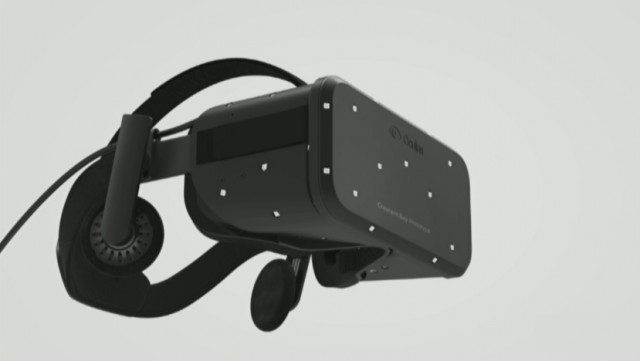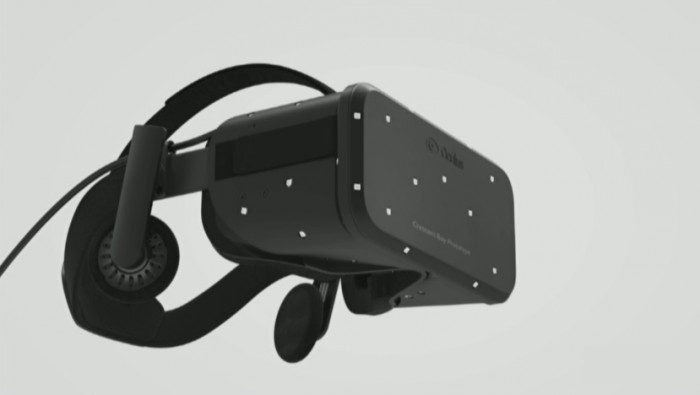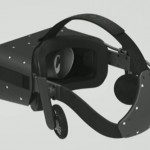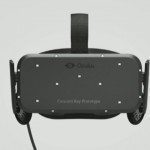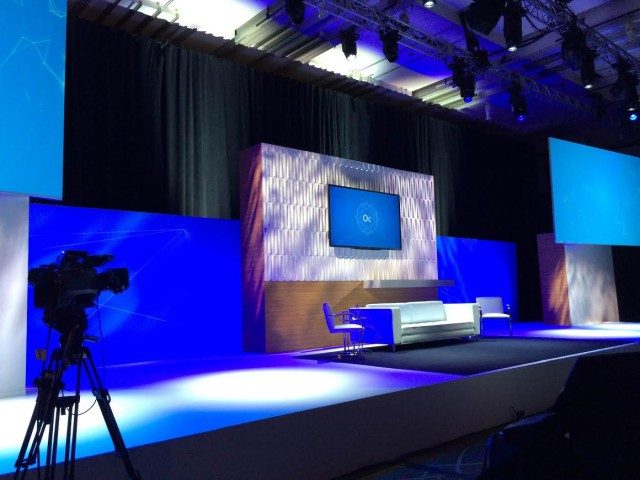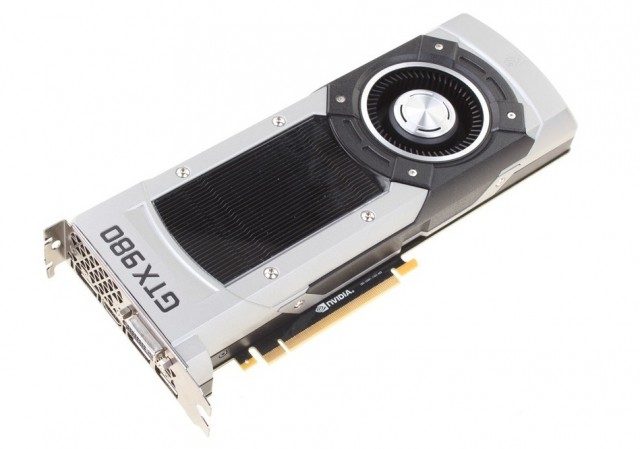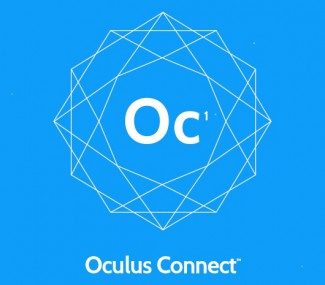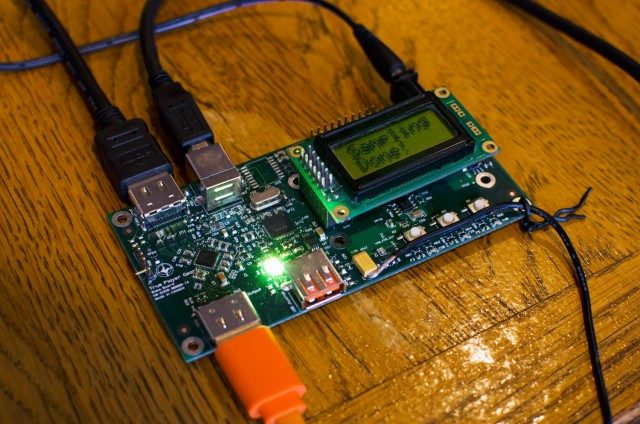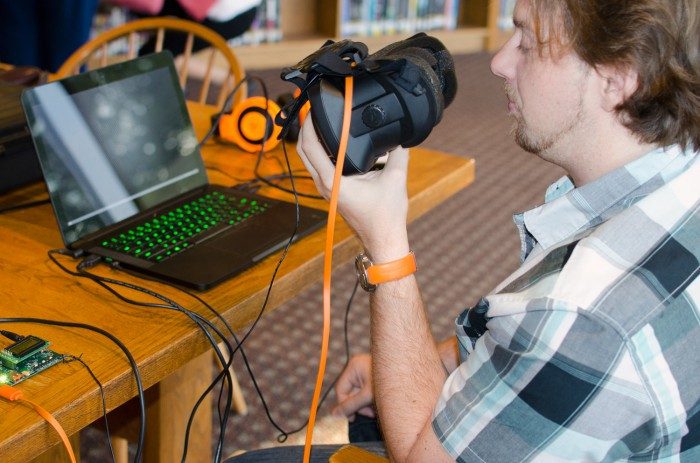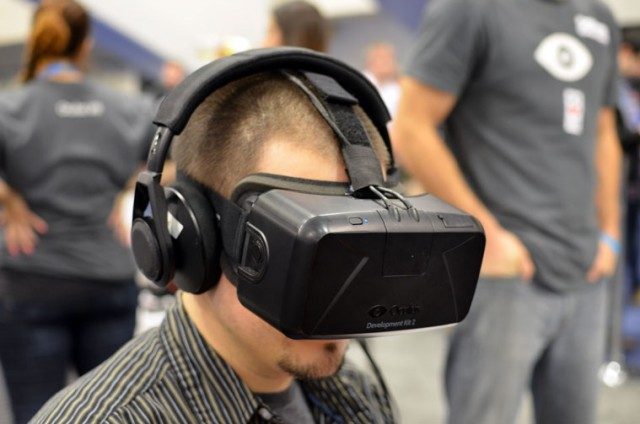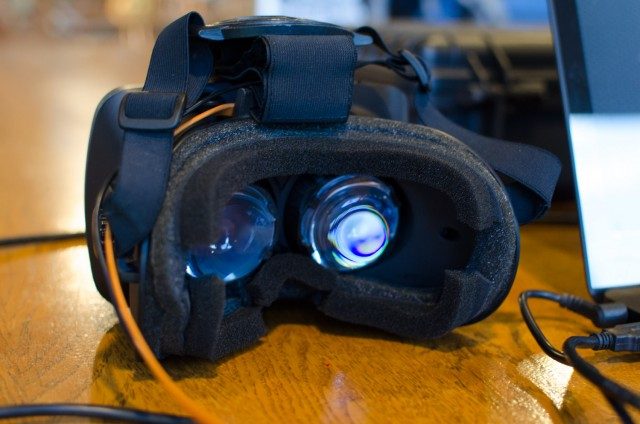Epic‘s Unreal engine has been front and centre in Oculus’ technical demonstrations since the Oculus Rift HD Prototype appeared just over a year ago and ever since. From the dazzling Elemental demo used to debut UE4 to the unnamed tower defence demo used to demonstrate the Crystal Cove’s new positional tracking tech and finally Coach Knights, used at the DK2 launch. Not to mention the raft of sample demo’s available from the UE4 marketplace.
See Also: Download 13 Beautiful Unreal Engine 4 Examples for the Oculus Rift DK2
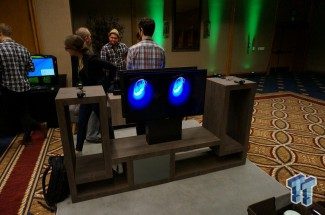 It looks as if the trend continues, this time at nVidia‘s recent Editor’s Day, a press event used to launch their new Maxwell line of GPUs and a slew of new VR based tech. The demo scene captured above by Tweaktown shows a new demo from Epic which drops you into the centre of a chaotic action sequence played out in super slow motion, allowing you to move through the action as the scene plays out.
It looks as if the trend continues, this time at nVidia‘s recent Editor’s Day, a press event used to launch their new Maxwell line of GPUs and a slew of new VR based tech. The demo scene captured above by Tweaktown shows a new demo from Epic which drops you into the centre of a chaotic action sequence played out in super slow motion, allowing you to move through the action as the scene plays out.
Christened “Car Flip” due to it’s centrepiece it shows off UE4’s cutting-edge technology to dazzling effect. The scene is strongly reminiscent from the opening scene from the 2001 hacker flick Swordfish (see below) and demonstrates something I’ve longed to do since seeing the Matrix all those years ago – experience bullet time.
Also on hand to demonstrate nVidia’s SLI tech which uses dual GPUs, dedicating one for rendering the view for each of your eyes, was another ‘old’ VR stalwart EVE: Valkyrie. Using stations configured with dual Maxwell GTX 980 GPUs hooked up to Oculus Rift DK2s, one would hope that achieving the required 75FPS at 1080p wouldn’t have been too challenging here.
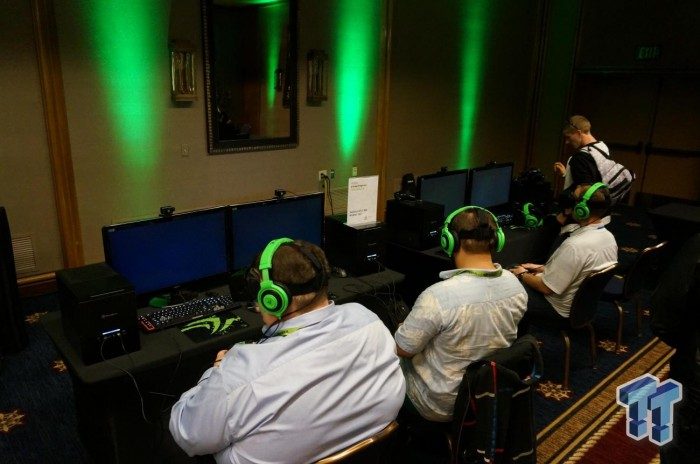
nVidia have clearly seen the enormous potential for selling to a new wave of hardcore gamers and the important role low latency, high frame rate rendering pipelines are going to be to virtual reality. And given the rumoured minimum 90Hz / 1440p requirement of the forthcoming Oculus Rift CV1, it looks like they’re just in time to ride that wave.
See Also: Big News for VR: Nvidia’s New Graphics Cards Are Designed for High Performance Virtual Reality Rendering

